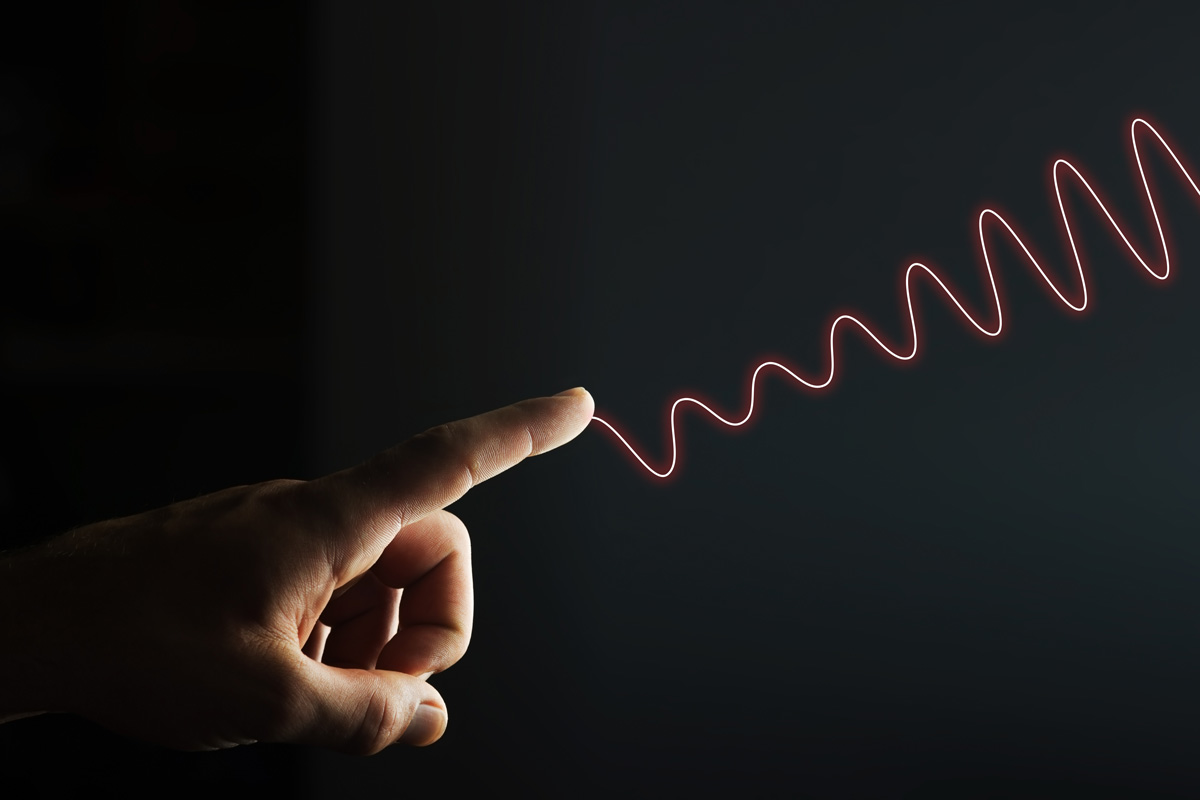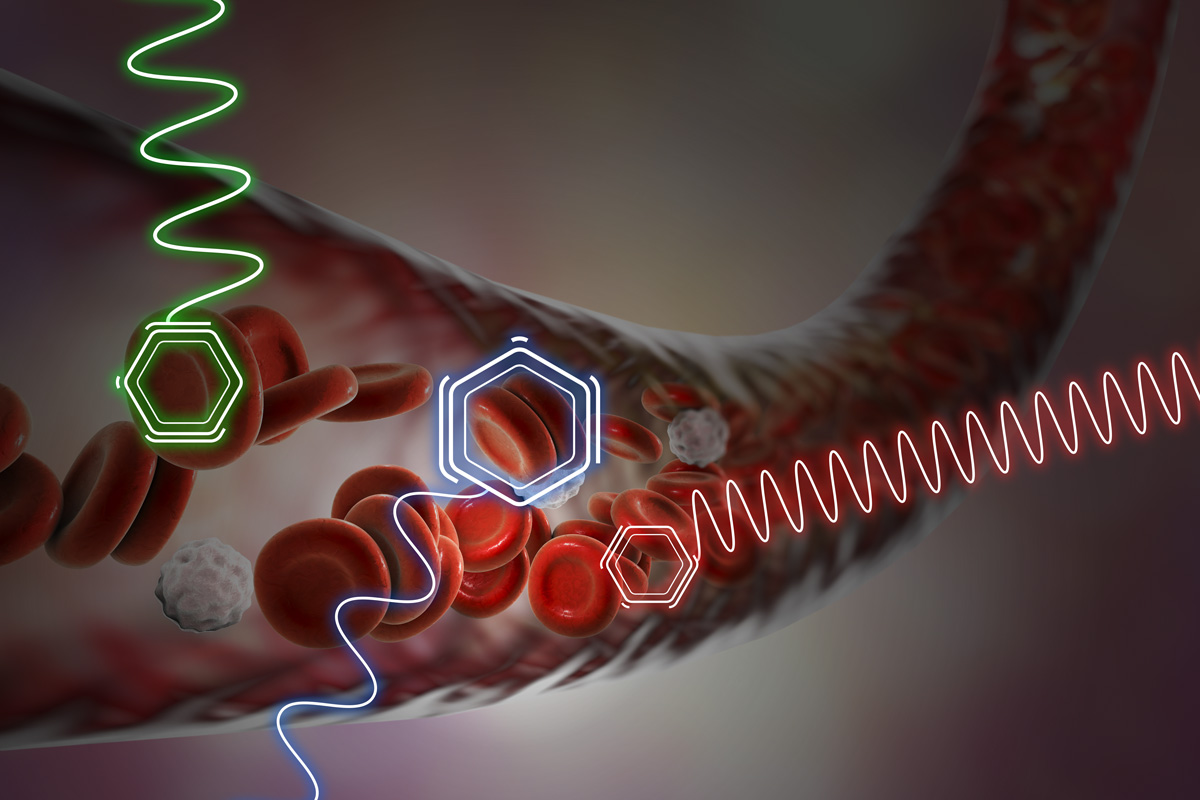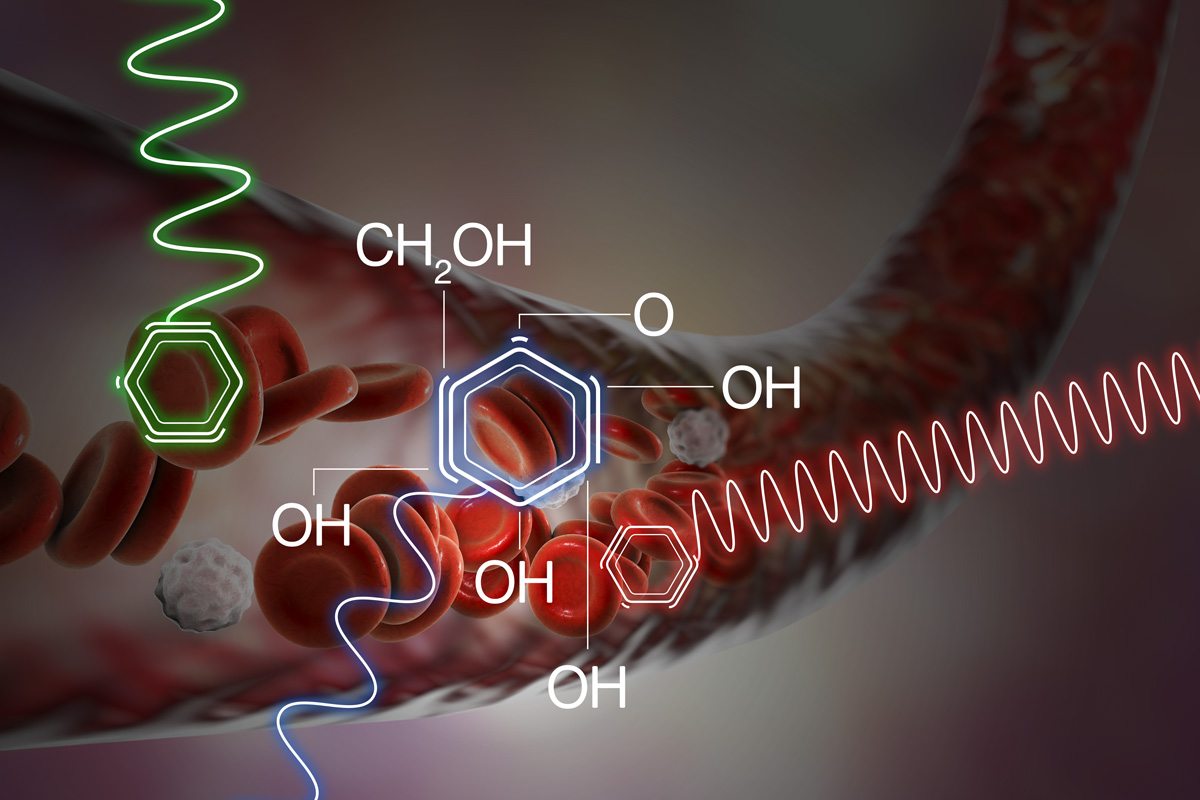Solution
How it works
The BioSpex solution uses advanced laser photonics (spectroscopy) to probe beneath the skin – without breaking the skin – to detect and measure blood glucose levels.

Skin-Deep
Using precise wavelengths, light photons penetrate deeply, interact with tissue, detect blood molecules, and transmit signals back to the optical detector.

Molecular interaction

Vibrational bonds
Each molecule is composed of different chemical bonds, and each bond has a distinct vibrational frequency. The laser beams distinguish glucose chemicals by their vibrations.

Chemical fingerprints
Photons interacting with molecules reveal their “chemical fingerprints” and alter the laser wavelengths. The extent of alteration reveals the full molecular structure and glucose concentration.

State-of-the-Art optoelectronics
Rapid advancements over the past two decades has enabled laser components to achieve much higher performance in ever smaller sizes, making possible efficient optical signal detection.

Why it’s better – and different
Self-monitoring requires drawing blood with a needle and a test strip. Continuous measurement devices require embedding a needle permanently under the skin .Many diabetes patients skip regular testing due to the pain and inconvenience of these methods.
Non-invasive glucose detection removes those barriers and makes regular testing highly available to everyone. Patients can test anywhere, anytime they choose, resulting in more frequent testing and better patient outcomes at a large scale.
